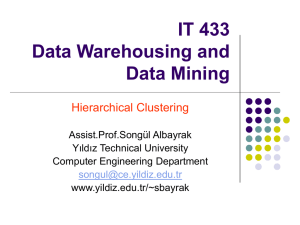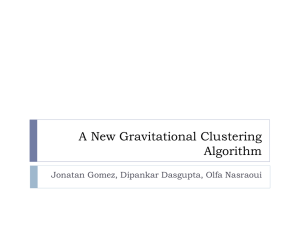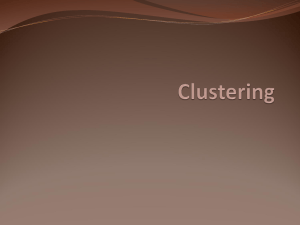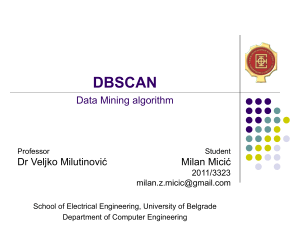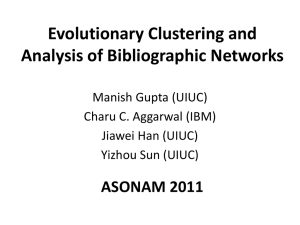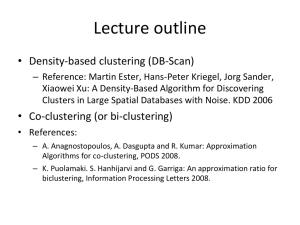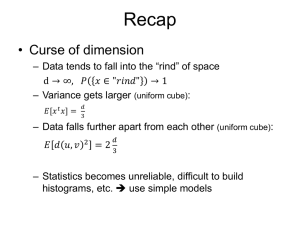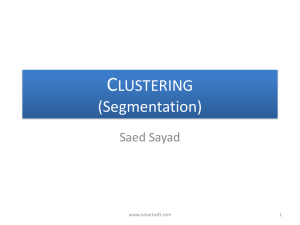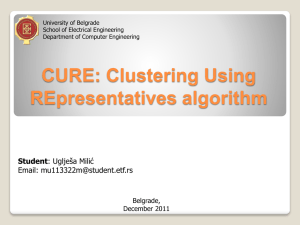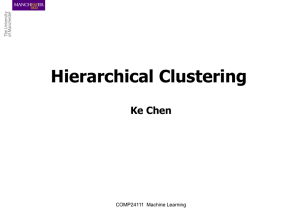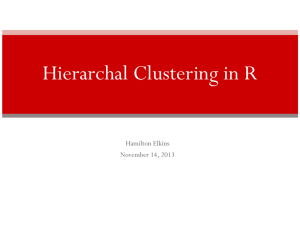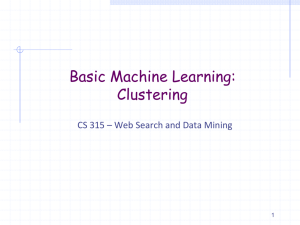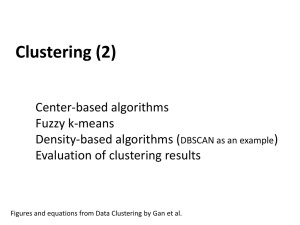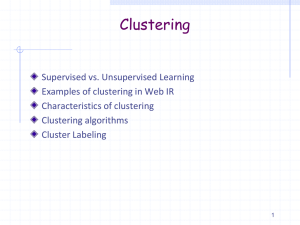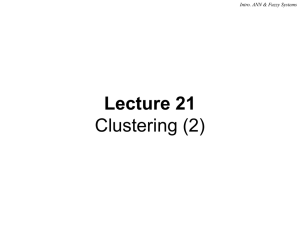cluster
advertisement
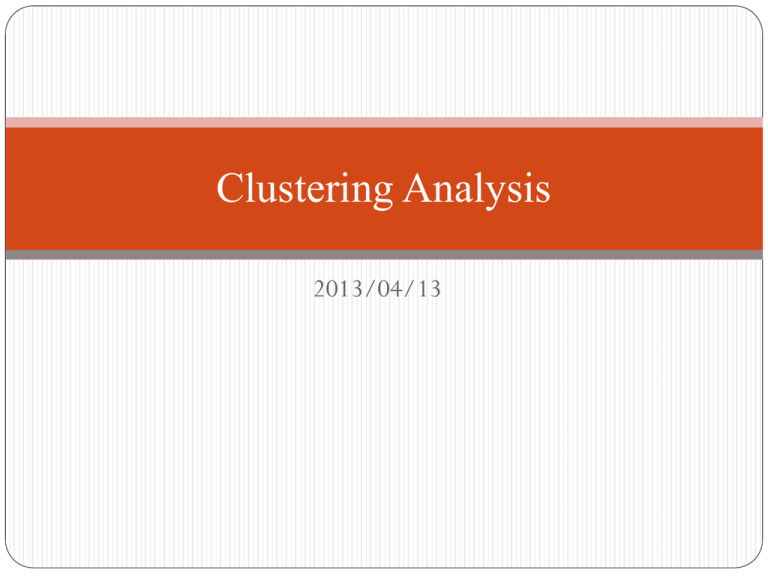
Clustering Analysis
2013/04/13
Outline
What is Clustering Analysis?
Partitioning Methods
K-Means
Hierarchical Methods
Agglomerative and Divisive hierarchical clustering
Density-Based Methods
DBSCAN
What is Clustering Analysis?
Cluster analysis or clustering is the task of grouping
a set of objects in such a way that objects in the same
group (called cluster) are more similar to each other
than to those in other groups (clusters).
Ex: Friends in facebook.
Clustering is useful in that it can lead to the discovery
of previously unknown groups within the data.
Partitioning Methods
Given a data set, D, of n objects, and k, the number of
clusters to form, a partitioning algorithm organizes the
objects into k partitions ( k ≤ n), where each partition
represents a cluster.
K-Means
Input:
1. X={x1,x2,…,xn}: A data set in d-dim space.
2. k:Number of clusters.
Output:
Cluster centers: c j , 1≤ j ≤ k .
Requirement:
The output should minimize the object function.
Object function
ej
|| x i c j ||
2
; Gj:第j個group , Cj: cluster center
x i G j
k
E
j 1
k
ej
|| x i c j ||
2
; k:Number of clusters.
j 1 x i G j
Goal: 要分成幾群以及相關的cluster center,
使得 E 的值為最小。
Algorithm: k-means. The k-means algorithm for partitioning,
where each cluster’s center is represented by the mean value of
the objects in the cluster.
Input:
k: the number of clusters,
D: a data set containing n objects.
Output: A set of k clusters.
Method:
(1) arbitrarily choose k objects from D as the initial cluster centers;
(2) repeat
(3) (re)assign each object to the cluster to which the object is the
most similar, based on the mean value of the objects in the
cluster;
(4) update the cluster means, that is, calculate the mean value of the
objects for each cluster;
(5) until no change;
Example
(3)assign
(4)update
Example
(4)update
(3)reassign
(4)update
(4)update
Hierarchical Methods
A hierarchical clustering method works by grouping
data objects into hierarchy or “tree” of clusters.
Representing data objects in form of hierarchy is
useful for data summarization and visualization.
Hierarchical methods suffer from the fact that once a
step(merge or spilt)is done,it can never be undone.
Agglomerative versus Divisive
hierarchical clustering
Agglomerative methods starts with individual objects
as clusters,which are iteratively merged to form larger
cluster.
Divisive methods initially let all the given objects form
one cluster,which they iteratively split into smaller
clusters.
Agglomerative clustering
Divisive clustering
Bottom-up
Top-down
Individual objects
Placing all objects in one
cluster
Merge
Split
Example
(Divisive hierarchical clustering)
1
6
9
7
2
4
8
d(Gt)=0.6
d(Gs)=1
d(Gt)=0.8
3
5
dmin=0.75
7
8
9
1
2
6
3
5
4
Example
(Agglomerative hierarchical clustering)
Five objects: (1,2) (2.5,4.5) (2,2) (4,1.5) (4,2.5)
Example
Five objects: (1,2) (2.5,4.5) (2,2) (4,1.5) (4,2.5)
D=
Example
Dendrogram
Density-Based Methods
Partitioning and hierarchical methods are designed to
find spherical-shaped clusters.
Density-based clustering methods can discover clusters
of nonspherical shape.
Density-Based Spatial Clustering of
Applications with Noise(DBSCAN)
DBSCAN finds core objects that have dense
neighborhoods.It connects core objects and their
neighborhoods to form dense regions as cluster.
A object is a core object if the ε-neighborhood of the
object contains at least MinPts objects.
1. ε-neighborhood is the space within a radius ε centered
at core objects.
2. MinPts: The minimum number of points required to
form a cluster.
Algorithm: DBSCAN: a density-based clustering algorithm.
Input:
D: a data set containing n objects ; ε : the radius parameter ; MinPts: the neighborhood density threshold.
Output: A set of density-based clusters.
Method:
(1) mark all objects as unvisited;
(2) do
(3)
randomly select an unvisited object p;
(4)
mark p as visited;
(5)
if the ε-neighborhood of p has at least MinPts objects
(6)
create a new cluster C, and add p to C;
(7)
let N be the set of objects in the -neighborhood of p;
(8)
for each point p’ in N
if p’ is unvisited
(9)
(10)
mark p’ as visited;
(11)
if the -neighborhood of p’ has at least MinPts points,
add those points to N;
if p’ is not yet a member of any cluster, add p’ to C;
(12)
(13)
end for
(14)
output C;
(15)
else mark p as noise;
(16) until no object is unvisited;
Example
A given ε
represented by the radius of the circles,
and let MinPts = 3.

